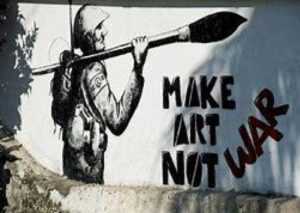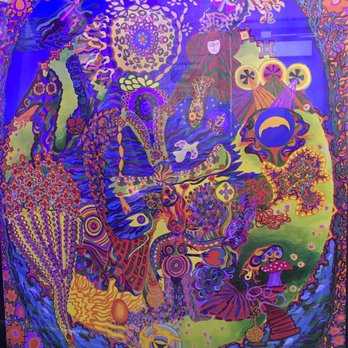Graffiti, once considered a rebellious act of vandalism, has evolved into a respected form of art and expression. From the streets of New York City to the walls of galleries and museums around the world, graffiti artists have made their mark on society in more ways than one. With its bold colors, intricate designs, and thought-provoking messages, graffiti has captured the attention and imagination of people from all walks of life.
What sets graffiti apart from other art forms is its ability to transcend traditional boundaries. It defies the limitations of a canvas, instead finding its canvas in the urban landscape. Graffiti artists use walls, buildings, and even trains as their medium, transforming once mundane spaces into vibrant works of art. This unconventional approach challenges the notion that art belongs solely in galleries and institutions, reminding us all that creativity knows no bounds.
But graffiti is more than just visually striking; it is a form of expression that gives voice to the marginalized. Through their art, graffiti artists often address social and political issues, shedding light on topics that are often ignored or overlooked. They challenge the status quo, provoke conversation, and inspire change. Graffiti becomes a powerful tool for activism, allowing those who feel unheard to have a platform to speak their truth.
While some still view graffiti as an act of vandalism, it is important to recognize its value as a legitimate art form. Graffiti artists possess a unique skill set that includes not only artistic ability but also an understanding of their surroundings and the ability to make a statement. Their work adds vibrancy to urban landscapes, sparks dialogue, and encourages us to question and explore the world around us. In this way, graffiti serves as a constant reminder that art can be found in the unlikeliest of places and that creativity has the power to inspire and unite.
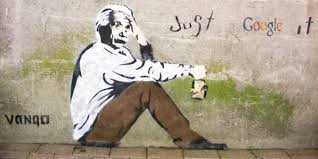
Graffiti, as a form of artistic expression, has a rich and diverse history that spans centuries. Its origins can be traced back to ancient civilizations where early humans used cave walls and surfaces to communicate and leave their mark.
The ancient Egyptians, for example, were known for their hieroglyphs, which could be considered a form of graffiti as they were a way to convey messages and tell stories. Similarly, the ancient Greeks and Romans also used graffiti-like inscriptions to express themselves and leave their mark on public spaces.
However, the modern graffiti movement as we know it today can be traced back to the late 1960s and early 1970s in New York City. During this time, the city was undergoing economic decline, and many neighborhoods were experiencing neglect and decay. It was in this environment that young individuals, often from marginalized communities, began using spray paint and markers to express themselves and reclaim their neighborhoods.
The Birth of Graffiti Writing
One of the key figures in the evolution of graffiti was a young artist named TAKI 183. TAKI 183 began writing his name on walls and subway trains, which eventually became an influential trend among other young artists and writers. This marked the birth of graffiti writing as a subculture and an art form.
From Vandalism to Art
While graffiti initially faced backlash from authorities and was seen as a form of vandalism, it gradually gained recognition as a legitimate art form. Artists like Keith Haring and Jean-Michel Basquiat played a significant role in elevating graffiti’s status by showcasing their work in galleries and museums.
Today, graffiti has evolved into a global phenomenon, with artists from all over the world using various techniques and styles to express their creativity. It can be seen not only on city streets but also in galleries, exhibitions, and even commissioned murals.
Graffiti continues to be a powerful form of art and expression, allowing individuals to convey messages, challenge societal norms, and beautify public spaces. As it continues to evolve and adapt, graffiti remains an integral part of contemporary art and cultural dialogue.
Inspiration Behind Graffiti
Graffiti is much more than just spray-painted tags on a wall. It is a form of art that is deeply rooted in creativity and self-expression. Graffiti artists find inspiration from various sources, and their artwork often reflects the world around them. Let’s explore some of the common inspirations behind graffiti.
Urban Environment
One of the biggest inspirations for graffiti artists is the urban environment itself. The concrete walls, empty buildings, and neglected spaces become their canvas. They see beauty and potential in these neglected spaces and use graffiti to bring life and color to the urban landscape. The decay and neglect of these areas inspire them to create art that is both visually striking and thought-provoking.
Social and Political Issues
Graffiti has long been used as a form of protest and expression of social and political issues. Artists use their artwork to make powerful statements about inequality, injustice, and other societal problems. Graffiti can serve as a voice for the marginalized and the oppressed, bringing attention to their struggles and demanding change. It is a powerful tool for expressing dissent and sparking conversations about important issues.
Inspiration Behind Graffiti:
| Inspiration | Description |
|---|---|
| Street Culture | Graffiti is deeply ingrained in street culture, including hip-hop, skateboarding, and punk. Artists are inspired by the rebellious spirit and underground nature of these subcultures. |
| Personal Experiences | Artists often draw inspiration from their own lives and personal experiences. Graffiti becomes a means of self-expression, allowing them to communicate their thoughts, emotions, and identities. |
| Artistic Influences | Graffiti artists are often influenced by other forms of art, such as street art, graphic design, and traditional art. They incorporate different techniques and styles into their graffiti, creating unique and visually stunning artwork. |
Overall, the inspiration behind graffiti is diverse and multifaceted. From the urban environment to social and political issues, graffiti artists draw from a wide range of sources to create their artwork. Their creations not only beautify the urban landscape but also serve as a powerful form of self-expression and a voice for the voiceless.
Pochoir: Combining Art and Stencil Techniques
Pochoir is a unique artistic technique that combines elements of art and stencil techniques. It originated in France in the early 20th century and quickly gained popularity within the art community.
The term “pochoir” comes from the French word for stencil and refers to the process of creating intricate, detailed designs using stencils and applying them to various surfaces such as paper, fabric, or walls.
Unlike traditional graffiti, which often relies on spray paint and freehand drawing, pochoir involves a more precise and controlled approach. Artists carefully cut out stencils from materials such as cardboard or acetate, and then use brushes or sponges to apply paint or ink through the openings onto the desired surface.
This technique allows artists to create highly detailed and intricate designs with clean lines and precise shapes. It also gives them the ability to easily replicate their designs, making it a popular choice for creating multiples or series of works.
Many artists use pochoir to create visually stunning and thought-provoking pieces of art. The combination of art and stencil techniques allows for a wide range of artistic expression and experimentation. Artists can incorporate various styles, textures, and colors to create unique and captivating works.
Pochoir has been used by artists around the world to create murals, paintings, and even street art. It has also been adapted for use in other art forms such as fashion, printing, and graphic design.
Overall, pochoir is a fascinating technique that combines the precision and control of stencil art with the artistic expression of fine art. It is a versatile and powerful tool that allows artists to create unique and visually striking works, making it an integral part of the graffiti and street art culture.
Understanding the Pochoir Technique
The pochoir technique is a stencil-based method of creating art that has been used in graffiti for many years. It involves cutting out a design or pattern from a thin and flexible material, such as paper or plastic, and then using this stencil to apply paint or ink to a surface.
This technique allows artists to create highly detailed and precise images with clean lines and sharp edges. It also enables them to add multiple layers of color and texture, creating depth and richness in their artwork.
History of the Pochoir Technique
The pochoir technique originated in France in the late 19th century and was initially used for creating prints and illustrations in books and magazines. However, it quickly gained popularity among graffiti artists who recognized its potential for creating intricate and visually striking designs on walls and other surfaces.
The technique was embraced by the early graffiti artists who saw pochoir as a way to bring their artwork to life and make a bold statement in public spaces. The use of stencils allowed them to quickly and efficiently create large-scale murals with a consistent style and aesthetic.
Process of Creating Pochoir Art

To create pochoir art, an artist begins by selecting or creating a design that they want to stencil onto a surface. This can be anything from a simple shape or pattern to a complex and detailed image.
Next, the artist cuts out the design from a stencil material, such as acetate or cardboard. They carefully remove the areas of the stencil that correspond to the areas they want to paint or ink, leaving behind the areas they want to remain blank.
Once the stencil is prepared, the artist then places it onto the desired surface and uses a brush or spray can to apply the paint or ink. They can use one color or multiple colors, layering them to create different effects and textures.
After the paint or ink has dried, the artist can remove the stencil to reveal the finished artwork. They can then touch up any areas that may need additional detail or shading to complete the piece.
The pochoir technique requires precision and skill, as any mistakes or errors in cutting or application can ruin the final artwork. However, with practice and experience, artists can create stunning and visually impactful pieces using this technique.
Overall, the pochoir technique is a valuable tool for graffiti artists, allowing them to create intricate and detailed designs with ease. It offers a unique and versatile approach to stencil-based art, enabling artists to express themselves and make a statement in public spaces.
Exploring Pochoir Street Art

Pochoir street art can be found in cities all over the world, with artists using this technique to create stunning and thought-provoking artworks on walls, buildings, and other public spaces. What makes pochoir art unique is the level of detail and precision that can be achieved using stencils, allowing artists to create complex and intricate designs.
One of the advantages of pochoir street art is its ability to quickly and efficiently reproduce a design multiple times. Artists can create a stencil and then use it to produce many identical images, making it an ideal technique for creating large-scale murals or artworks that need to be replicated. This makes pochoir street art a powerful tool for expressing a message or making a statement on a wide scale.
Another interesting aspect of pochoir street art is its versatility. Artists can use a variety of materials for their stencils, including cardboard, plastic, or even metal. This allows for different textures and effects to be achieved in the final artwork. Some artists also incorporate additional techniques, such as layering multiple stencils or adding hand-painted details, to further enhance their artwork.
Pochoir street art has its roots in political and social movements, where artists used stencils to create powerful visual messages. However, today, pochoir art has evolved into a recognized form of artistic expression that can be appreciated for its creativity and skill. Many cities now embrace and even commission pochoir street art as a way to beautify public spaces and promote creativity.
If you ever come across a pochoir street artwork, take the time to admire the intricacy and detail that goes into creating it. Whether it’s a large-scale mural or a smaller piece hidden in a back alley, each pochoir artwork tells a unique story and adds a touch of artistic beauty to the urban landscape.
The Role of Color in Street Art

Color plays a crucial role in the world of street art. It is a powerful tool that artists use to convey their message, evoke emotions, and captivate the viewer’s attention. The vibrant and bold colors used in street art have the ability to transform ordinary spaces into visually captivating landscapes.
One of the main reasons why color is so important in street art is its ability to grab the attention of passersby. The use of bright and eye-catching colors helps street art stand out in the urban environment, drawing people’s gaze away from the monotony of everyday life and into the world of art. The striking colors create a sense of excitement and intrigue, urging viewers to stop and take a closer look.
Symbolism and Meaning
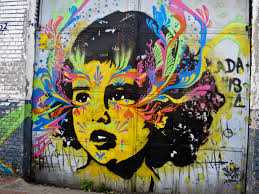
Color also plays a significant role in the symbolism and meaning behind street art. Each color holds its own meaning and can be used to convey a specific message. For example, the color red is often associated with passion, love, and energy, while blue can represent tranquility and calmness. By strategically using colors, street artists can add depth and layers of meaning to their artwork.
Furthermore, color can be used to evoke emotions and create a certain atmosphere within a piece of street art. Bright and warm colors like yellow and orange can create a feeling of joy and happiness, while darker and cooler colors like black and blue can evoke a sense of mystery and melancholy. The use of different color combinations allows artists to manipulate the viewer’s emotions and establish a particular mood.
Street Art and Urban Environment
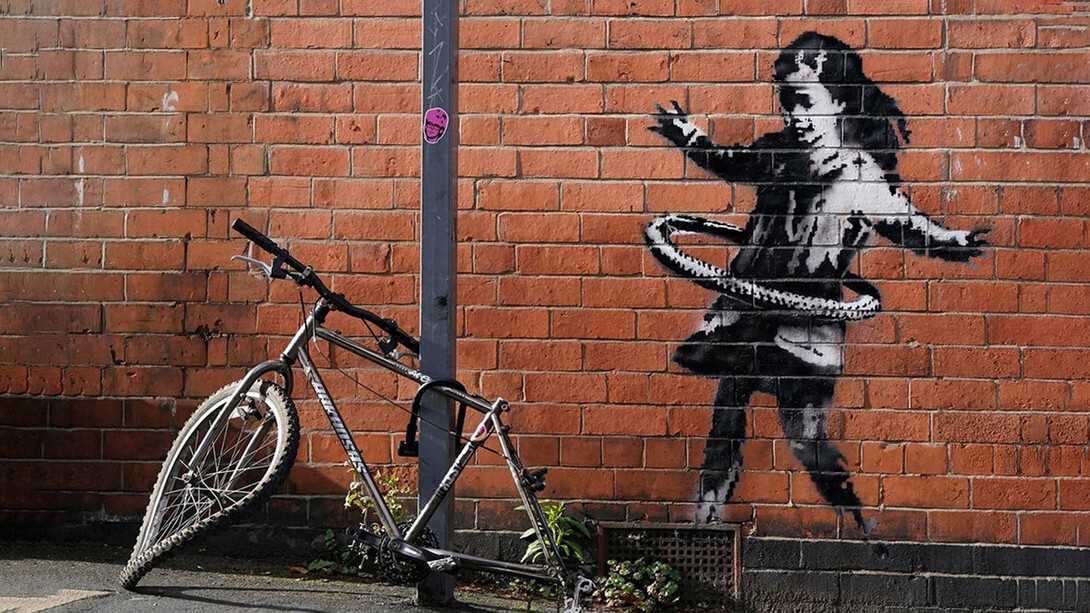
Colorful street art can transform a dull and lifeless urban environment into a vibrant and inspiring one. By adding pops of color to otherwise plain walls and buildings, street art can rejuvenate a neighborhood and bring a sense of energy to an area. It can also serve as a way to express cultural and social identity, making streets more welcoming and inclusive.
| Color | Meaning |
|---|---|
| Red | Passion, love, energy |
| Blue | Tranquility, calmness |
| Yellow | Joy, happiness |
| Black | Mystery, melancholy |
Impact of Vibrant Colors in Urban Environments
In urban environments, where concrete structures dominate the landscape, vibrant colors can have a powerful impact on the overall atmosphere and mood. Graffiti, as a form of art and expression, often utilizes these vibrant colors to create eye-catching pieces that stand out in the urban jungle.
One of the main effects of vibrant colors in urban environments is their ability to transform a dull and monotonous space into a lively and engaging area. Vibrant colors have the power to grab the attention of passersby and create a sense of energy and excitement. In a cityscape filled with grey buildings and busy streets, graffiti art with vibrant colors can bring an element of surprise and wonder.
Emotional Impact

The use of vibrant colors in graffiti also has a strong emotional impact on viewers. Colors such as red, orange, and yellow can evoke feelings of happiness, optimism, and warmth. These colors have the ability to uplift the spirits of urban dwellers, providing a temporary escape from the hustle and bustle of city life. The bold use of vibrant colors in graffiti art can also ignite a sense of rebellion and freedom, challenging the conformity and rigidity of urban spaces.
Community Engagement
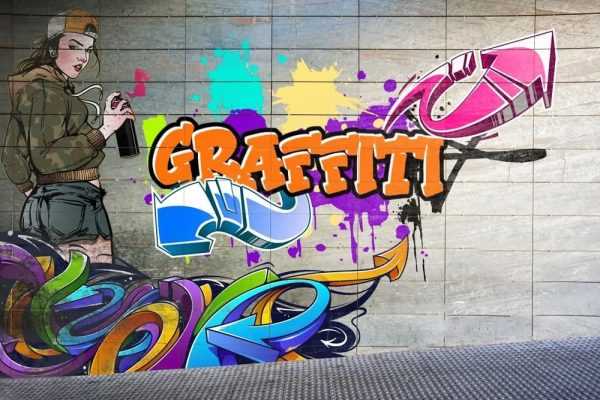
The presence of vibrant graffiti art in urban environments can foster a sense of community engagement. People are often drawn to colorful and visually stimulating artwork, creating opportunities for social interaction and conversation. Graffiti often serves as a medium for artists to express their thoughts, beliefs, and concerns, sparking discussions and debates among city residents. In this way, vibrant colors in graffiti can act as a catalyst for community engagement and dialogue.
| Benefits of Vibrant Colors in Urban Environments | Drawbacks of Vibrant Colors in Urban Environments |
|---|---|
| – Enhances the visual appeal of urban spaces – Provides a creative outlet for artists – Creates a sense of vibrancy and liveliness – Encourages community engagement |
– Potential for vandalism and illegal graffiti – Can be seen as a form of visual pollution by some – May be subject to censorship and removal by authorities – Can contribute to a sense of chaos or disorder if not regulated |
Color Theory in Street Art

In street art, color plays a vital role in conveying emotions, messages, and making an impactful statement. Artists carefully choose their color palette to evoke specific feelings in the viewer and to create visual harmony in their artwork.
Color theory, a fundamental concept in art, helps street artists create aesthetically pleasing compositions and communicate their ideas effectively. It involves understanding the relationships and interactions between colors, such as complementary, analogous, and monochromatic schemes.
Complementary colors, which are opposite each other on the color wheel (e.g., blue and orange, red and green), create a strong contrast in street art. This contrast catches the eye and adds visual interest to the artwork. Artists often use this technique to highlight certain elements or to create a focal point.
Analogous colors, which are adjacent to each other on the color wheel (e.g., red, orange, and yellow), create a sense of harmony and cohesion in street art. Artists use this scheme to create a unified and balanced composition. It can be especially effective when painting murals or large-scale artworks.
Monochromatic schemes, which use variations of a single color, can evoke a specific mood or atmosphere in street art. By using different shades, tints, and tones of one color, artists can create depth, shadows, and highlights. It can give a sense of calmness, mystery, or intensity to the artwork.
Street artists also consider the cultural and psychological associations that colors have when creating their artwork. For example, red can symbolize passion, love, or anger, while blue can convey tranquility, sadness, or coldness. By understanding these associations, artists can enhance the emotional impact of their work.
Overall, color theory in street art is a powerful tool that helps artists communicate their messages effectively and evoke strong emotional responses from viewers. By carefully selecting and utilizing colors, street artists can create captivating and visually impactful artworks that contribute to the vibrant world of street art.

I am a mural enthusiast and a fervent admirer of street art. Rather than creating murals myself, I am passionate about collecting them. My love for street art knows no bounds. I am dedicated to curating and cherishing these artworks that grace the streets. My collection stands as a testament to my profound appreciation for this form of artistic expression.
read about me

